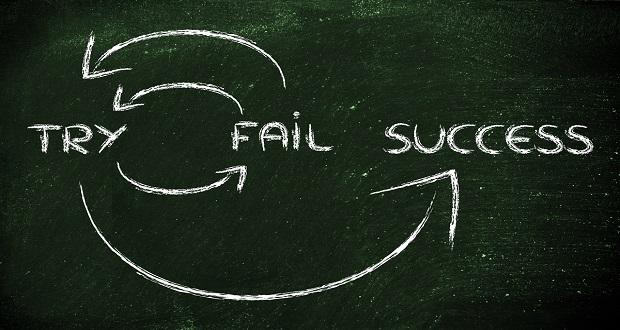
There are many things to be excited about as we embark on the year 2020: new trends, the next technology, catchy radio hits, milestones, watching spicy presidential debates…you name it! But, as the public health nerd and social justice advocate that I am, I cannot wait for the 2020 Census season!
Now, you may be rolling your eyes right now, but the census is one of the few and most important ways we can participate in civic engagement in the country. It is just as important as (or some might argue even more than) getting your vote out at your local, county, state, and of course, the presidential election (shameless plug to register to vote for 2020!)
So why the census, and what’s the point?
The goal of the census is to get a precise count of every person living in the country, including basic demographic information such as race and current living arrangements. You might be thinking… why are you so hyped? What’s the big deal? The purpose of the census is not necessarily just to show how much our country’s makeup has changed; rather it serves a much more powerful role. The census determines how to redraw congressional and state districts to ensure that your vote has an equal impact and power. And if you are not eligible to vote, why should you care? The census also determines where over 675 billion federal dollars get allocated (based on population and areas of need) for social services, public health programs, educational resources, and more.
Yet, similar to voting, census participation rates are much lower than the ideal 100%. The average census self-response rate in 2010 (the last census) was only 74%—this may seem high, and as a former survey researcher, is quite impressive. However, just taking a brief look at responses by region, vast disparities in response rates exist—with Midwest, rural, and predominantly upper-middle class, and white communities reporting the highest participation (70% or more), and more urban, lower-income, and indigenous tribal land areas having the lowest response rates (often 50% or less). Additionally, over one million children were unaccounted for in the 2010 census, which inevitably impacted and continues to stifle funding for children’s service from early childhood education to healthcare.
Fortunately, with time we have seen progress—there have been inclusive new improvements to the 2020 census such as:
There is no citizenship question—After much deliberation, citizenship has been taken out of consideration and will not be included in the census. This ensures that people will not have to disclose their citizenship status, and hopefully encourage residents to participate in the census without fear of residency data being used against them. This is crucial for people to understand- especially for people who live fearing danger of their documentation disclosure, due to the current socio-political climate.
You can take the census online—For the first time ever, the census is being offered online, as well as by mail and by phone. This is imperative, and makes the process much easier (How many times have you accidentally thrown away important mail? Also, think about people who work irregular hours, travel, or move frequently.)
Disaggregation of racial and ethnic groups/ languages offered—Racial/ethnic diversity is often difficult to measure, and many researchers have critiqued surveys like the census for not including enough categories and specifications to ensure accurate data. The 2020 census will include write-in portions for people to disclose their race and ethnicity beyond the traditional “white,” “black,” “asian,” and “hispanic/latino,” and “American Indian.” Disaggregating this data is critical for ensuring that our country’s resources are distributed to fit our ever-growing diverse country, by creating data to support the need for culturally-specific programs, policies, and services.
Flexibility in relationship disclosure—In order to improve data on same-sex couples, the 2020 census now has the ability to differentiate household relationships beyond the single/married binary, as well as differentiating between same-sex and opposite-sex relationships. This is vital to help get an accurate representation of the diversity in how we define household or family, or domestic partnership, while also providing data to support inclusion efforts for people who identify as LGBTQ+ and their families. However, the binary category of sex (male or female) still exists (hopefully to change in 2030!)
Even though there are many important ways the census can ultimately benefit diversity and inclusion across the country, there still are barriers, misconceptions, and unfortunately, disparities in data collecting techniques. Share on XEven though there are many important ways the census can ultimately benefit diversity and inclusion across the country, there still are barriers, misconceptions, and unfortunately, disparities in data collecting techniques. These barriers are immensely harmful to the distribution of public services and division of congressional districts, and ultimately, lead to painting a skewed picture of who we are as a diverse country. So, what can you do to foster equity and inclusion in the census process, make sure the resources are equitably allocated, and ensure that all people are reached and accounted for in our country’s resource allocation and decision-making?
Support and volunteer for Census Bureau community outreach efforts
Say you work for an underserved community with limited access to internet, a detention center, a homeless shelter, or even care for long-term patients at a hospital. All these people will be contacted for the census, but their circumstances might make participation harder. The Census Bureau website has many resources for local leaders, public service professionals, or any community member, to create a customized plan to ensure the people you serve get counted. This community outreach toolkit is a great resource to start! If you don’t directly work in spaces that need census support, there are plenty of other ways to be involved as well. Check your local area’s census outreach efforts: for example, NYC has a Get Counted census initiative that is recruiting volunteers and local leaders to help recruit and spread the word about the census in historically low-response areas.
Work for the 2020 Census
Looking for a flexible, temporary side job with decent pay (anywhere from $15-31 an hour depending on where you live)? The census is hiring thousands of people in every part of the country to help collect census data in-person from people who don’t respond online, by phone, or through the mail before the summer months. If you live in or live close to a community that historically has been undercounted, and you want to make a difference, there is no better way to advocate and support than fostering personal connection and showing people that participation means more than just a statistic. The hiring process is currently happening but will end soon: apply here to learn more.
Spread the word
If you learned something new after reading this, chances are, someone in your network is also unaware of the importance of the 2020 census, and what is included. Looking for one go-to flyer to post up in your neighborhood, or share on your Facebook? Here is the official Census 101 flyer. I urge you to share the importance of the census in your community- whether its roads, schools, hospitals, or something else, I empower you to share your narrative of what it means to be counted, and clear the misconceptions and doubts that people may have. And of course, spreading the word through media goes a long way: The Census Bureau has curated dozens of infographics, brochures, and flyers about the 2020 census, as well as reports of how census data has been used previously. Check them out here!
Let us make sure everyone not just counts but is valued in the U.S. I hope the results of the 2020 census can bring the power and resources to foster equity and inclusion for our diverse and dynamic country.
Let us make sure everyone not just counts but is valued in the U.S. I hope the results of the 2020 census can bring the power and resources to foster equity and inclusion for our diverse and dynamic country. Share on X

















